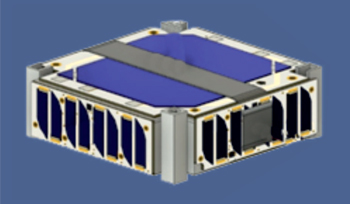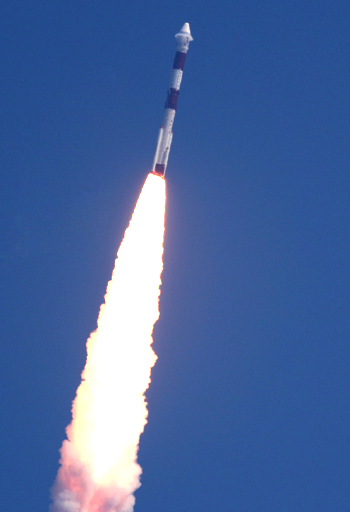INDIAN ARMED FORCES CHIEFS ON OUR RELENTLESS AND FOCUSED PUBLISHING EFFORTS

The insightful articles, inspiring narrations and analytical perspectives presented by the Editorial Team, establish an alluring connect with the reader. My compliments and best wishes to SP Guide Publications.

"Over the past 60 years, the growth of SP Guide Publications has mirrored the rising stature of Indian Navy. Its well-researched and informative magazines on Defence and Aerospace sector have served to shape an educated opinion of our military personnel, policy makers and the public alike. I wish SP's Publication team continued success, fair winds and following seas in all future endeavour!"

Since, its inception in 1964, SP Guide Publications has consistently demonstrated commitment to high-quality journalism in the aerospace and defence sectors, earning a well-deserved reputation as Asia's largest media house in this domain. I wish SP Guide Publications continued success in its pursuit of excellence.
- Operation Sindoor: Resolute yet Restrained
- India’s Operation Sindoor Sends a Clear Message to Terror and the World – ‘ZERO TOLERANCE’
- Japan and India set forth a defence cooperation consultancy framework, talks on tank and jet engines
- Terrorist Attack in Pahalgam in Kashmir: Unfolding a long surgical war against PAK
- Lt General Pratik Sharma takes over Command of Indian Army's Northern Command
75 Satellites Marking 75 Years of Independence
Indian Technology Congress Association (ITCA) is playing the lead role in this mission for ensuring design, development, fabrication, testing and launching of the 75 nano-satellites, and is being supported by ISRO in the mission
 |
The Author is Former Director General of Information Systems and A Special Forces Veteran, Indian Army |

India will be witnessing a bonanza of satellites as part of the celebrations for the 75th year of Independence. News reports of March 10 indicate that 75 satellites are being built by Indian academia under the technical guidance of Dr Mayilsamy Annadurai, a former Director of the lead centre for the design and development of satellites of Indian Space Research Organisation (ISRO). These 75 satellites are to be launched by ISRO rockets between August 15, 2022, and 2023 to commemorate the 75th year of Indian independence.
In 2021, a handful of Indian academia had built three satellites called 'UNITYSat', which was launched as a co-passenger in ISRO's PSLV C51, Amazonia mission. According to Dr Annadurai, some of the major lessons that students learned from building UNITYSat are being implemented in the ongoing project of building 75 satellites. The 75 satellites project has been initiated by the Indian Technology Congress Association (ITCA), which aims to bring together universities, engineering colleges and schools that will design, build, integrate and test their student-built satellites.
Though respective academic institutions are bearing the cost of this initiative, some state governments, like Karnataka, are also giving financial support to help students from their government-run schools. To test the new systems that are being incorporated in the upcoming satellites, an engineering model is to be flown in the coming months. Once the validation is completed successfully, the students will be trained to build the nano-satellites and undertake related tasks, with the support of an Indian space start-up.
These 75 satellites are to be launched by ISRO rockets between August 15, 2022, and 2023 to commemorate the 75th year of Indian independence
The start-up is expected to provide satellite-building kits to the students in order to cut down costs and fabrication time for the 75 satellites. ISRO’s PSLV rocket will place these satellites in orbit. Each of these satellites is designed to remain in earth orbit for up to a year and provide data to the ground stations.This will give the students the ability to operate the ground station to track the satellite, gather and analyse the data obtained, in addition to experience of building satellites.
Dr Annadurai told media that while each of these satellites weighing less than 10 kg is to have an individual objective like capturing images, collecting data, monitoring radiation and other parameters, the constellation of 75 nano-satellites will also be used to test concepts like the Internet of Things (IoT), low-earth communication, inter-satellite communication and the like. This will keep the mission going, even if a few satellites fail. This concept also has the potential to be improvised, even beyond this mission.
ITCA is playing the lead role in this mission for ensuring design, development, fabrication, testing and launching of the 75 nano-satellites, and is being supported by ISRO in the mission. In the next year, ITCA and ISRO will mentor the students, provide them technical support, review the progress of the mission and suggest corrections as necessary. The project monitoring committee comprising of experts from within and outside ISRO is to meet every few weeks to track the progress of the mission and ensure its facilitation.
Each of these satellites is designed to remain in earth orbit for up to a year and provide data to the ground stations. This will give the students the ability to operate the ground station to track the satellite, gather and analyse the data obtained, in addition to experience of building satellites
In February 2022, Union Minister of State (independent charge) of Science and Technology, Jitendra Singh told Rajya Sabha that ISRO has launched 129 indigenous satellites 342 foreign satellites belonging to 36 countries since 1975, and that of the total foreign satellites, 39 are commercial satellites with the rest nano-satellites. He also said that India has a total of 53 operational satellites in space, providing various identified services to the nation; 21 of which are communication satellites, eight are navigation satellites, 21 are Earth observation satellites and three are science satellites.

Singh also told Rajya Sabha, “The satellite-enabled data and services are being used for the benefit of various sectors of the country. These include television broadcasting, direct-to-home, ATM, mobile communication, tele-education, tele-medicine and advisories on weather, pest infestation, Agro-meteorology and potential fishing zones. Satellite data is also used for crop production estimation, crop intensification, and agricultural drought assessment, wasteland inventory, identifying ground water prospect zones, inland aquaculture suitability and disaster risk reduction." Listing a host of applications, he also said, “Many of the applications have been effectively adopted by stakeholder departments for operational use", and that ISRO has plans to launch more satellites to further enhance operational applications and cater to the needs of emerging applications and user ministerial requirements in the country.
ISRO said on March 9, 2022, that the Chandra's Atmospheric Composition Explorer-2 (CHACE-2), a quadrupole mass spectrometer onboard Chandrayaan-2 mission, has made the first-of-its-kind observations of the global distribution of Argon-40 in the tenuous lunar exosphere. These observations provide insight on the dynamics of the lunar exospheric species, as well as on the radiogenic activities in the first few tens of metres below the lunar surface.
The 75 satellites project has been initiated by the Indian Technology Congress Association (ITCA), which aims to bring together universities, engineering colleges and schools that will design, build, integrate and test their student-built satellites
Earth's Moon features a surface-boundary-exosphere. For Moon, different constituents in the exosphere are fed from the surface by a variety of processes, such as thermal desorption, solar wind sputtering, photo-stimulated desorption, and micrometeorite impact vaporisation. The exospheric atoms may be lost to space by the thermal escape. Also, the atoms get ionised by photo-ionisation and charge exchange with the solar wind ions. Subsequently, they can be swept away by the convective electric field of the solar wind. Exosphere is the outermost region of the upper atmosphere of a celestial body where the constituent atoms and molecules rarely collide with each other and can escape into space.
The lunar exosphere exists as a result of a dynamic equilibrium between several source and sink processes. Noble gases serve as important tracers to understand the processes of surface-exosphere interaction, and Argon-40 (Ar-40) is such an important tracer atom to study the dynamics of the lunar exospheric species. Ar-40 originates from the radioactive disintegration of Potassium-40 (K-40) present below the lunar surface. Once formed, it diffuses through the inter-granular space and makes way up to the lunar exosphere through seepages and faults.
ISRO has said that the CHACE-2 observations provide the diurnal and spatial variation of Ar-40 covering the equatorial and mid latitude regions of the Moon and that the observations by CHACE-2 onboard Chandrayaan-2 orbiter on Ar-40 up to the mid-latitude regions (-60° to 60°) play a significant role to bridge the gap in the knowledge; since CHACE-2 observations reveal an increase in the number density of Ar-40 near the sunrise terminator, a decrease through the dayside, a secondary peak near sunset terminator and a night-side minima.





